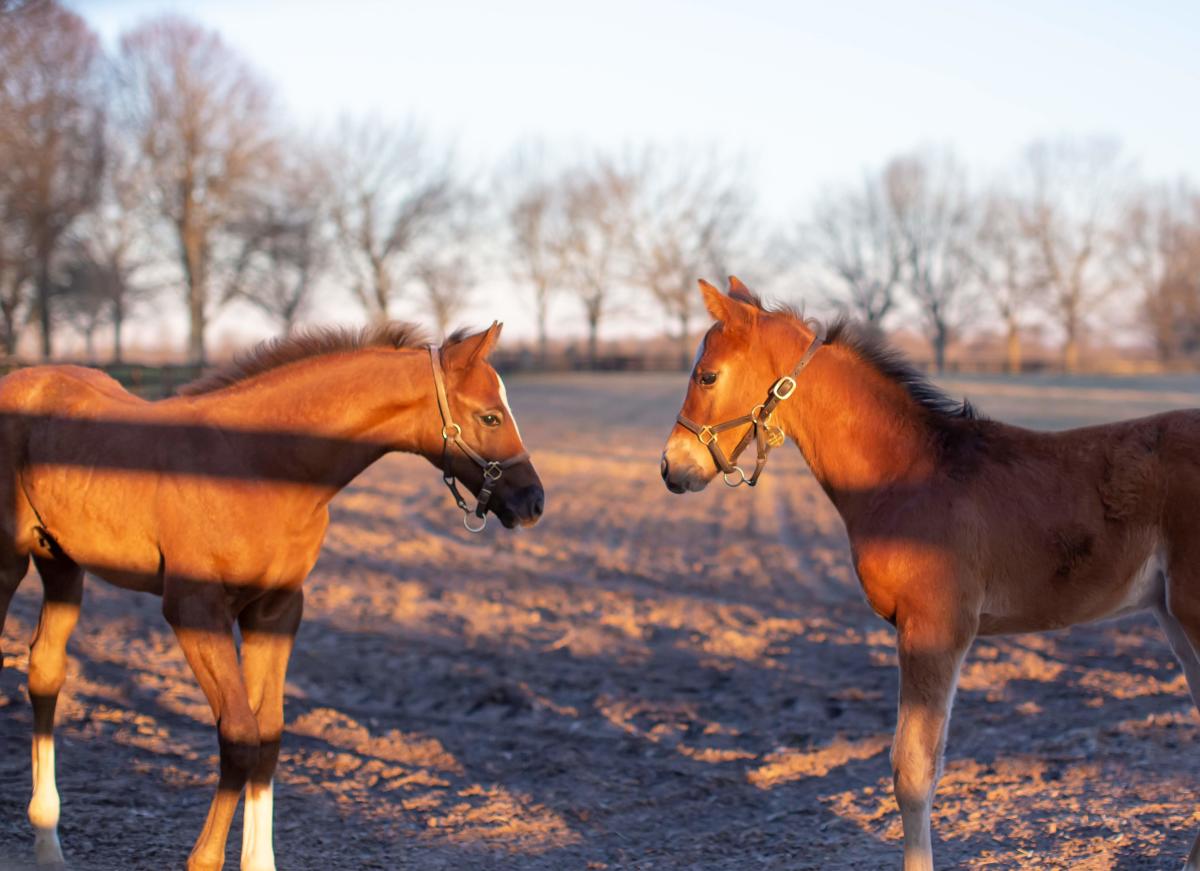Your Comprehensive Guide to Horse Breeding

If you have enough land, time, and energy, you are fortunate enough to enjoy breeding your own horses. The emotional bonds between horses and humans are unparalleled and evolve over time. Horses are highly intelligent and emotional animals that can change your life. Dealing with horses is one of the activities that can relieve stress and psychological pressure. However, if you decide to breed horses, you must be fully prepared and consider financial matters in addition to the required commitment. In this article, we will present the most common types of horses and everything you need to know about breeding them.
Top 10 Horse Breeds:
-
Arabian Horse: The Arabian horse is the oldest, most famous, and most expensive horse globally. It is the most agile, beautiful, and fast horse, characterized by the curve in its spine and its proud head with a straight neck and a tail carried high. Arabian horses are divided into several types based on the white mark on their foreheads.
-
Shetland Pony: The Shetland pony is one of the smallest horses in the world, with a height not exceeding 107 cm. It is distinguished by its thick fur, giving it a cute appearance, and its unique colors that differentiate it from other horse breeds. Despite its small stature, this breed possesses speed and agility like other horses.
-
Thoroughbred Horses: Thoroughbred horses are among the most famous hybrid horse breeds globally. They result from the crossbreeding of three generations of Arabian horses with English horses. This breed combines the speed, agility, strength, and stability of Arabian horses with the adaptability to European climates of English horses. Thoroughbreds are extensively used in competitions.
-
American Quarter Horses: American Quarter Horses are the most popular horses in the world due to their carrying capacity and speed, reaching up to 88 km/h. They are the result of crossbreeding Native American horses with horses coming from Britain during colonization.
-
Appaloosa Horses: Appaloosa horses are considered the most beautiful horses globally, with spotted black and white skin and striped hooves. They have solid parts in the iris of their eyes, possess high physical strength, and weigh approximately 430-570 kg, with a height of up to 163 cm.
-
Friesian Horses: Friesian horses, also known as Dutch Cloud Horses, are characterized by their shiny black skin and long, wavy mane. Originating in the Netherlands, the current breed is a result of crossbreeding Dutch Friesians with Arabian horses. The current Friesian horses inherit speed from Arabian genes and strength from their European ancestors, making them suitable for Olympic sports.
-
Belgian Horse: The Belgian horse is one of the largest horse breeds globally, with a length of 190 cm and a weight of up to 600 kg. Historically used for heavy lifting due to its physical strength, the Belgian horse is recognized by its thick mane.
-
Andalusian Horse: The Andalusian horse, also known as the Spanish horse, is one of the oldest horse breeds globally, originating from the Iberian Peninsula (Spain and Portugal). This breed remained mostly unchanged, except for crossbreeding with Arabian horses during the Arab presence in Andalusia.
-
Shire Horse: Shire horses were historically used for carriage pulling in the Shire region of England. Known for their elegance, these horses were eventually used by the British royal family for carriage pulling, earning them the name "Shire Royal English Horse." They are characterized by shiny black coats and white hair above their hooves.
-
Gypsy Horse: The Irish Gypsy Horse is relatively small but possesses strong and sturdy muscular structure. Known for its ability to climb mountains, it became the preferred choice for the nomadic Gypsies in Europe. The Gypsy Horse is extremely beautiful, with long flowing mane and thick hair around its hooves.
Essentials of Horse Breeding:
Breeding horses is not an easy task and requires many requirements and commitments. Before considering breeding them correctly, follow these rules:
-
Provide Sufficient Land:
- In addition to stables, allocate a large space for storing hay and training horses.
-
Financial Considerations:
- The cost of purchasing horses is linked to their specific activity. Racing horses have the highest expenses, and the price increases for purebred horses.
-
Nutrition:
- Horses eat and drink a lot, so provide large quantities of hay, oats, wheat, and mineral supplements. Use large water containers.
-
Veterinary Services:
- Ensure veterinary services, including necessary vaccinations, treatment, monitoring of pregnancies, and births.
Read more:
Sources: